Uncle Eckley
eXtreme
Readying one of my DWC reservoirs for a new plant today and had everything all clean and pretty, so thought I'd show and tell. I run a little 36x20x63" grow tent in the closet next to my chair and I need things streamlined to make up for the narrow access I've got to the tent. (The doors slide one behind the other, so can only open one side at a time.)
The biggest problem was water changes. Next to my chair, I'd done hydro in 5-gallon buckets. Changing the nute solution involved lifting the lid of the bucket plant and all off the working reservoir, setting the plant on an empty standby bucket while I worked, then schlepping water in to mix and pour into the working reservoir before returning the plant to its place under the light. This was a pain and disturbed the plant being changed and usually all of its neighbors, too, especially as the plants grew larger.
The first thing I tried was beverage dispensers with a spigot. They actually worked well. I set a wire shelf that spanned the tent parallel to the floor at about four inches up and set the beverage dispenser reservoirs on that. This let me slide my long, flat waste receptacle under the shelf so I could simply open the spigots to drain away the old solution. The only problem was the beverage dispensers wouldn't drain completely. There'd be a half-inch or more fluid left in the bottom unless I picked them up and tilted them around, which of course partially defeated the purpose of having the spigots. I needed something better.
The waste receptacle was an important find. It's meant to catch used oil when changing the filter on a motorcycle and holds around three gallons of fluid, which is almost enough, lol, will get to that later. Anyway, it was a little expensive, but the thing was just perfect for my application; the broad side intended to catch the oil is faceted to a shallow concavity with an inlet at the center to make a funnel of the entire container (pictured below).
I realized I needed a container with a conical shape to the bottom if it was ever going to drain completely without fussing with it. There are loads of tanks and hoppers and scientific glassware available with such a shape, but much of it is prohibitively expensive for what I'm doing. I figure it's one of those bloated captive market things - nobody's paying for this stuff out of pocket, it's always a business expense to write off, so why not get rich and stick it to the taxpayer? Anyway, after much searching I found just the thing - on Amazon, of course, lol! This is a conical fermenter. I gather folks ferment stuff in it. I've never messed with that but.. This. Thing. Is. Perfect. I get 2.5 gallons of fluid in there comfortably, it's got a big ass ball valve (comes apart for cleaning - awesome) with a barb fitting at the bottom, a screw on cap that's already got a small hole in it (for the airlock, but I stick a grommet in there and run the air line through it), AND it comes with a wire stand that looks taller than it should be, but is actually just right. They're more expensive than the iced tea tanks, but they're worth every penny.
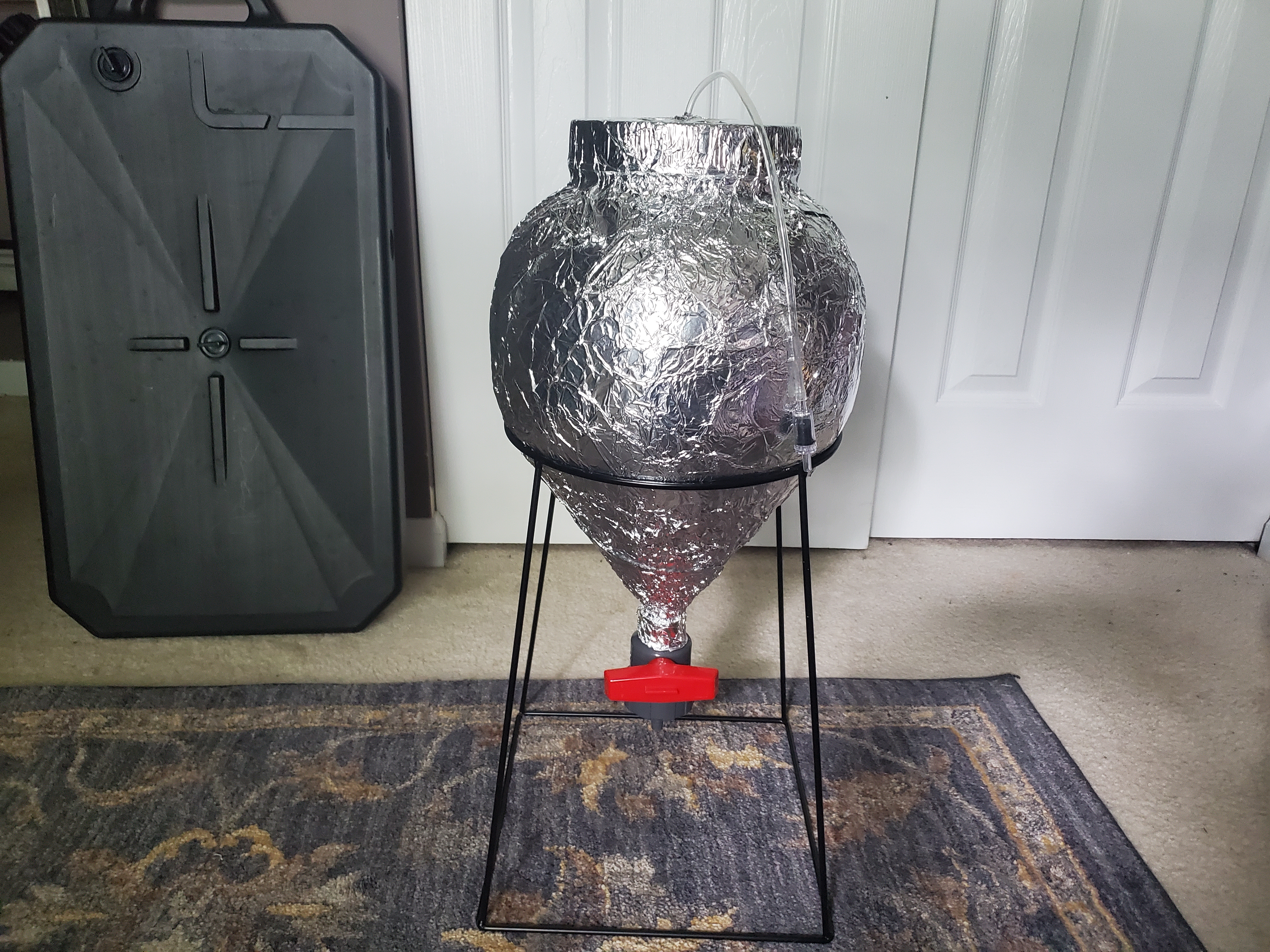
The plant never has to move. I lay my motorcycle oil pan receptacle (black at left there) on the floor in front of the tent, attach a PVC keg hose to the barb fitting on the reservoir valve, and run it into the inlet on the waste tank. Then open the valve and wait for the reservoir to drain. Once it's drained I run a gallon or so of fresh water through to rinse, then close the valve and the waste tank and set to refilling with fresh nutes. I pour the used waste fluid over my roses out front.
Three-inch hole saw to accept a net cup. I used to wrap the foil first then press in the air line grommet, but I'm too lazy now to make it look pretty. Would have done if I'd planned to take these photos. The air line is connected with a few elbows to help keep it from swimming around in the reservoir.
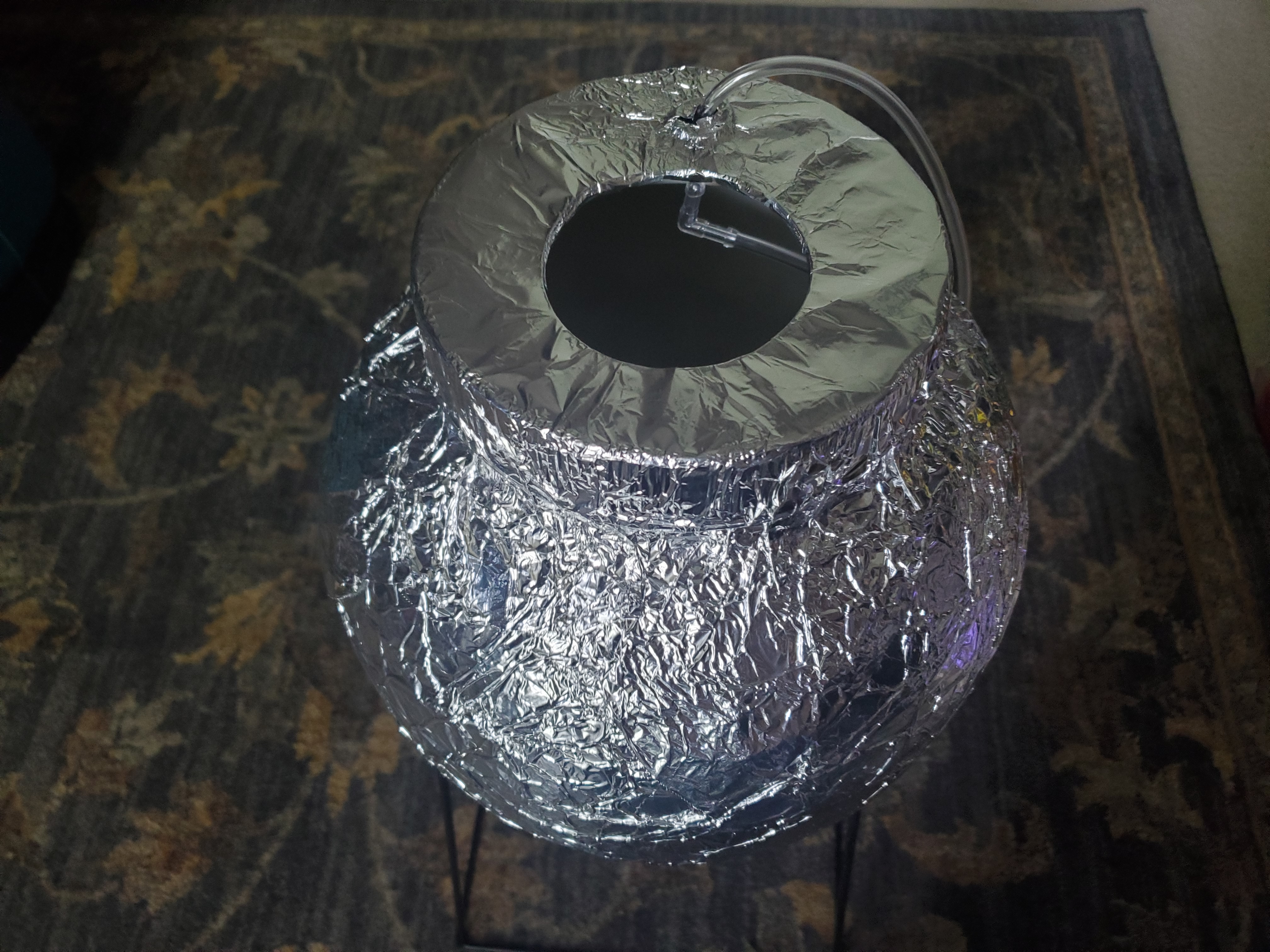
There are a few suction cups in there too that seem to work. I thought for sure they'd let go, but nope, they hold. This is all to try to keep the roots from wrapping around the air line and upsetting the air stone whenever I lift the plants for inspection of their nethers. Forgot to have one of the orange rings for the air stone printed for this one. Sorry for the crappy shot, was juggling everything.
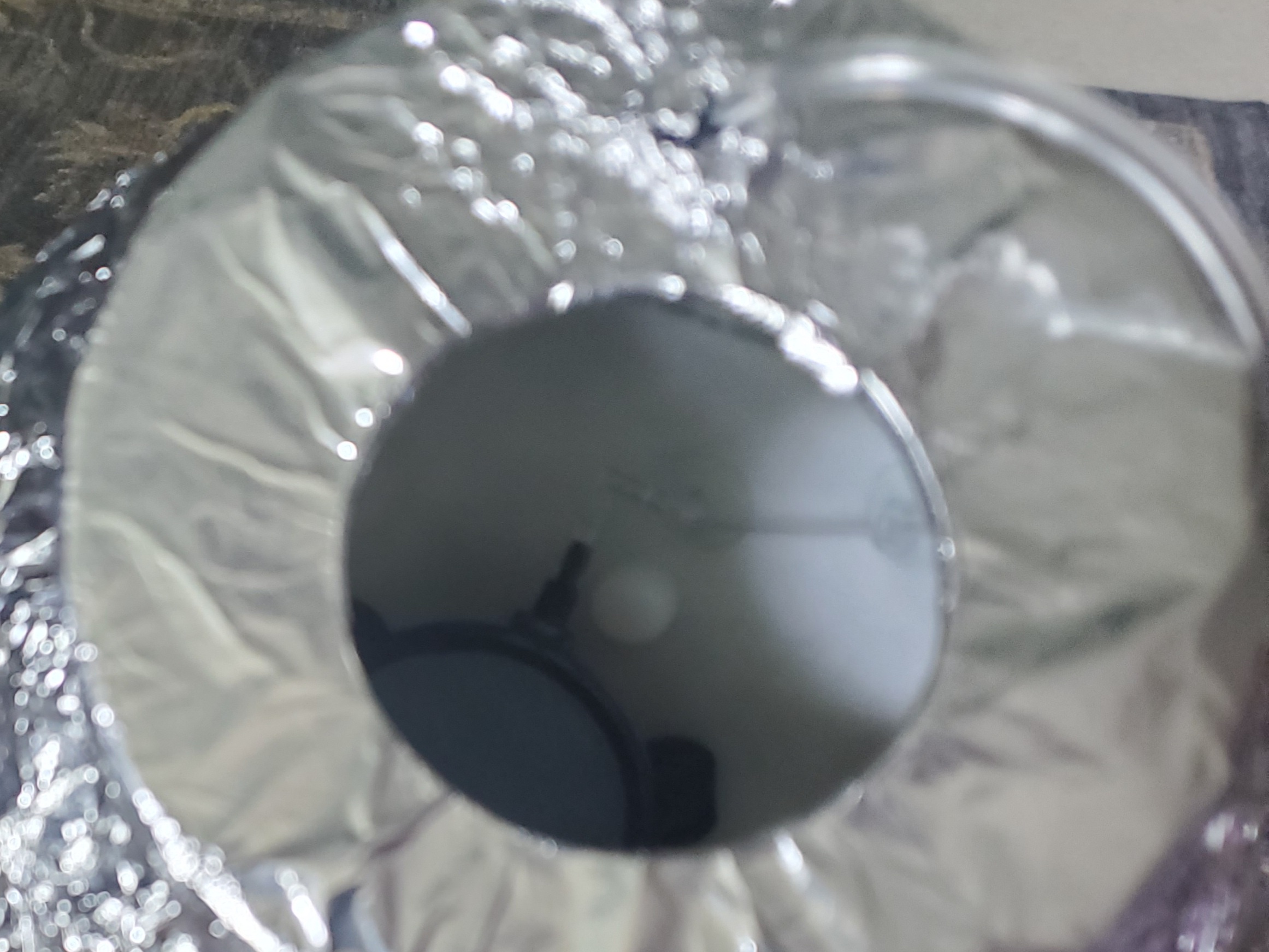
This is my third- or fourth-generation net cup, can't remember. Long arms with plenty of holes for low stress training ties. The cubicle space fits a 1.5" Grodan cube and lets me use very little Hydroton. Some plants do without any at all on top, just a few pieces in the pyramid at the bottom to help wick up nutes early on.
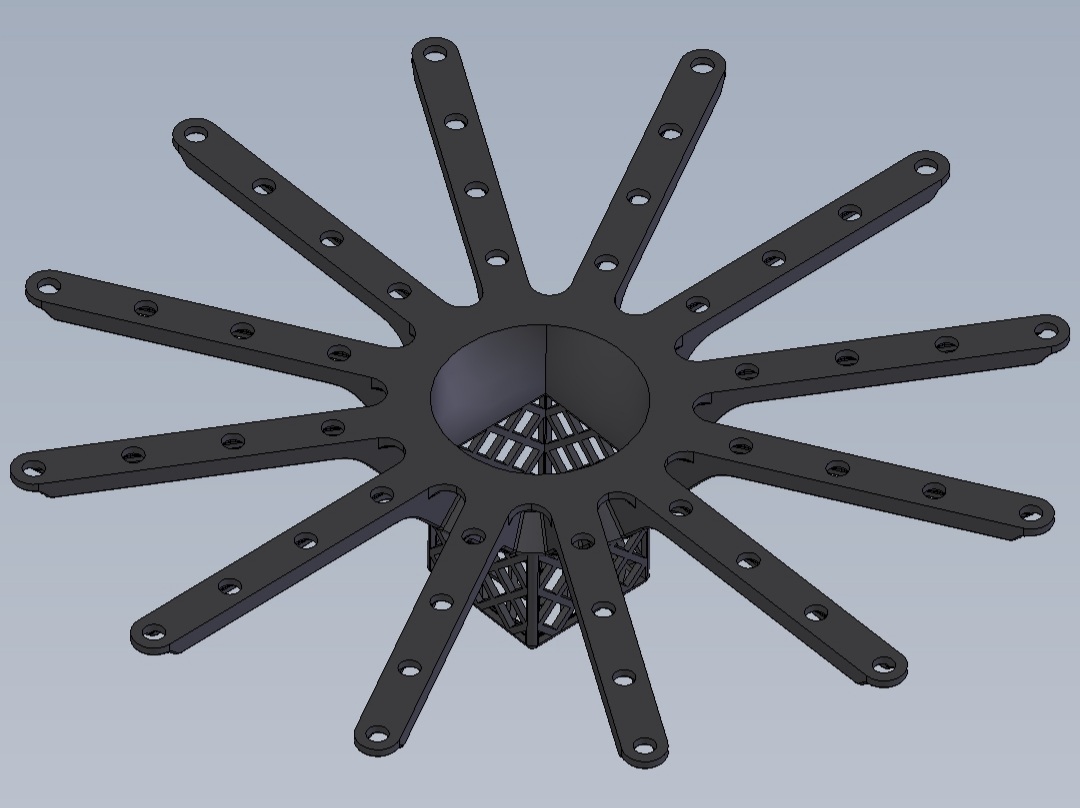
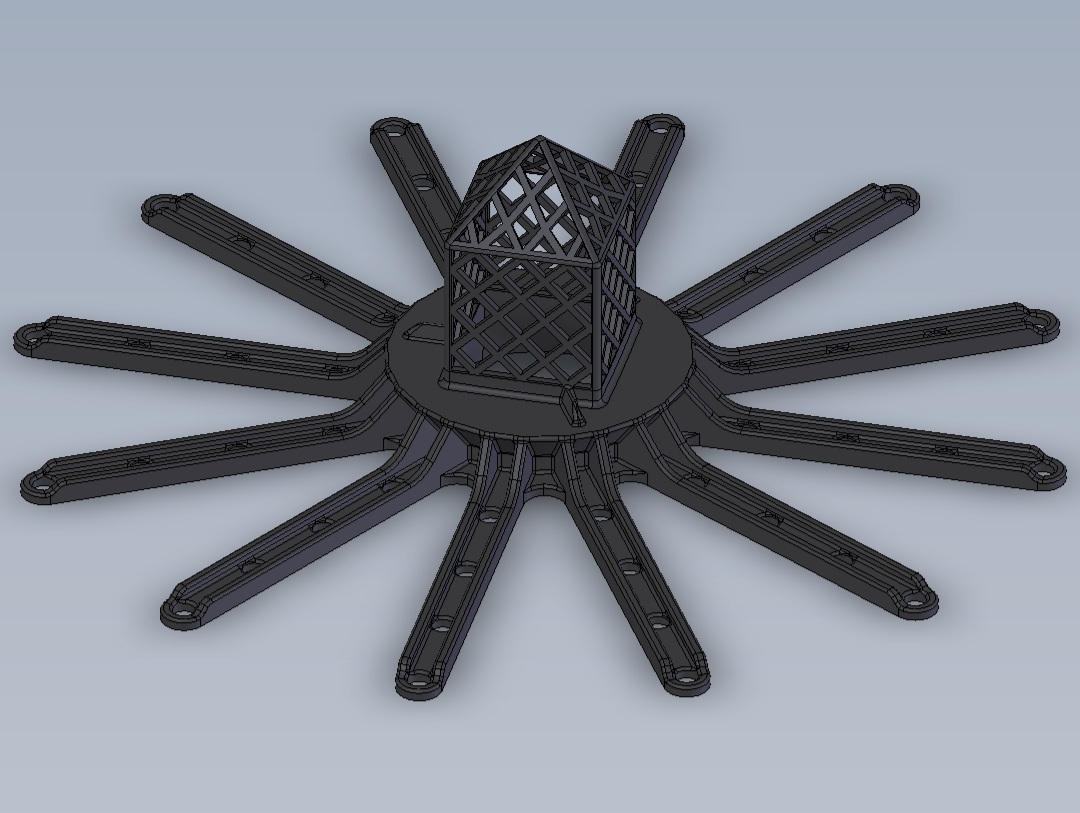
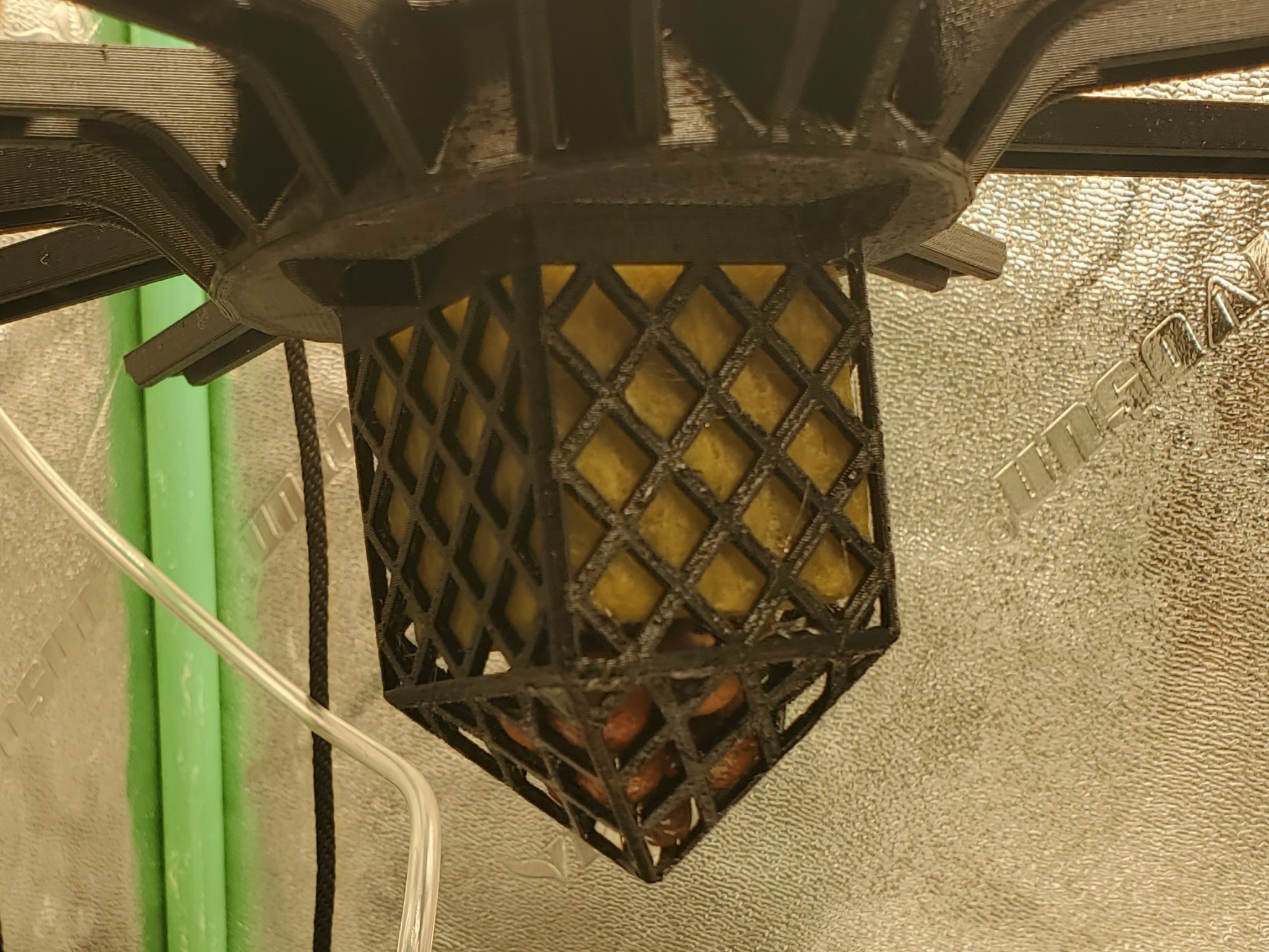
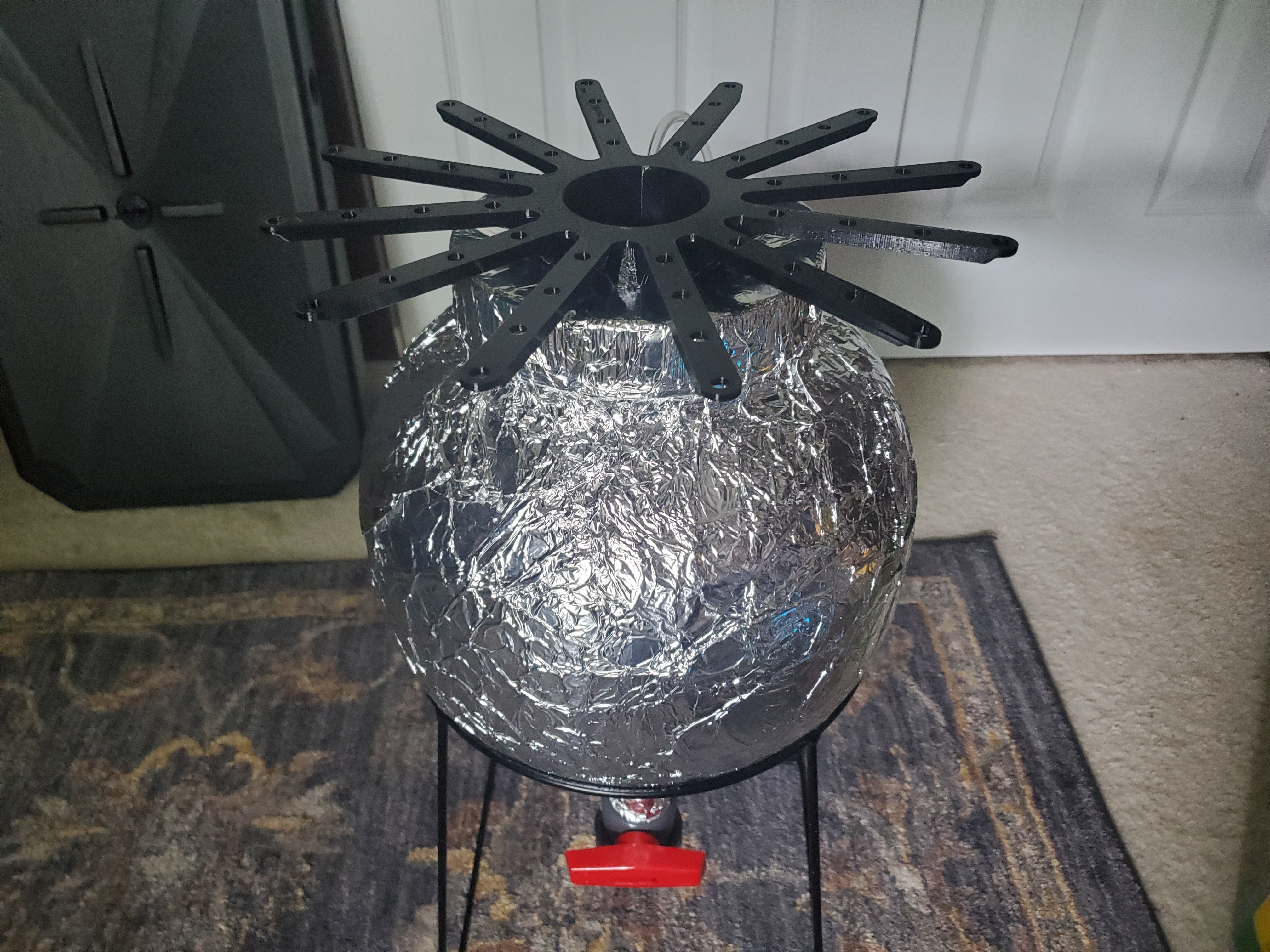
Bucket with a Uniseal, ball valve, and barb fitting makes mixing and refilling a breeze!
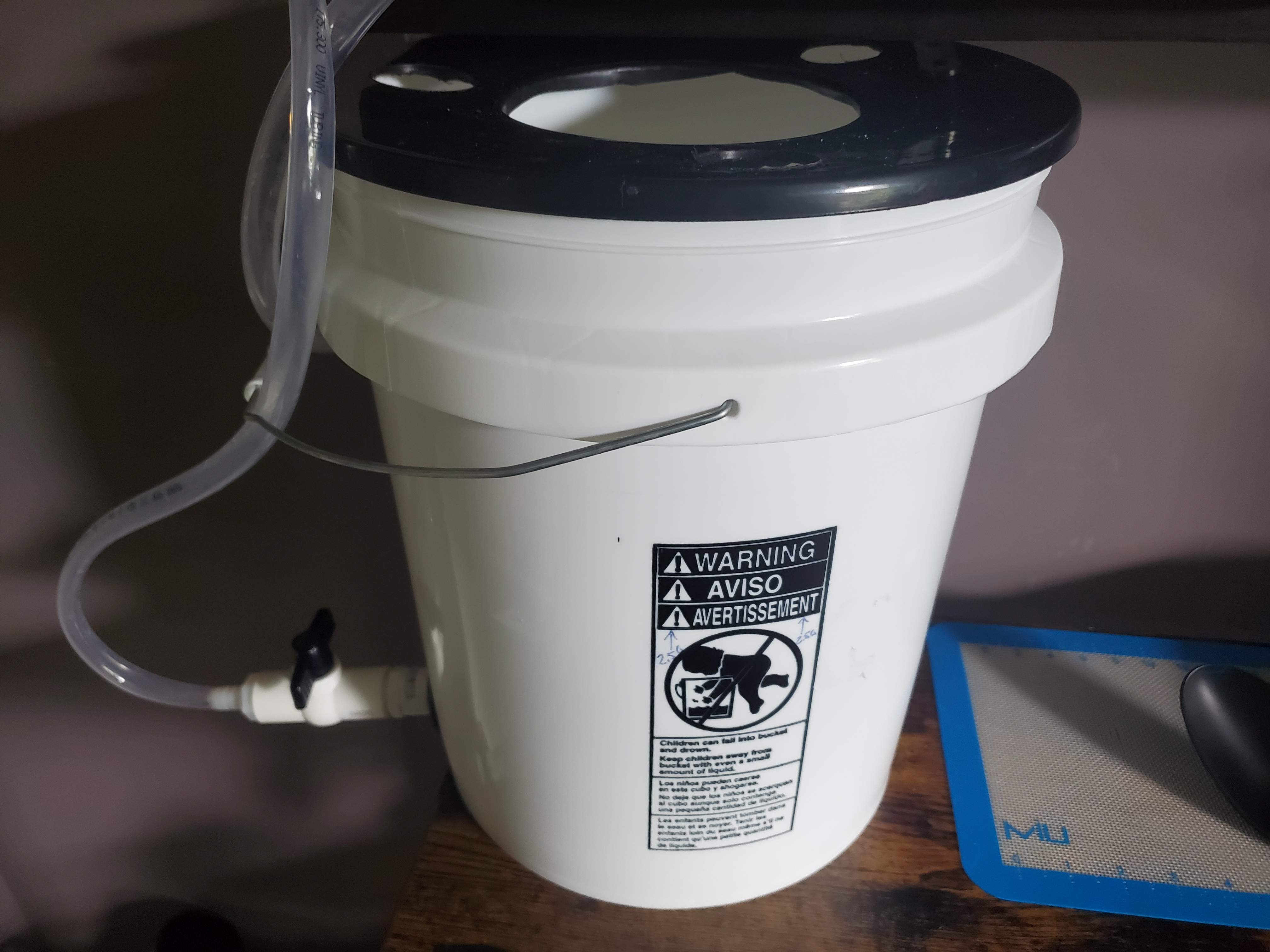
I'll never grow DWC in a bucket again, this is too much better all around. (Well, except for the cost, which isn't too bad.)
As always, any and all questions, comments, and criticisms are very welcome and I thank you all most warmly for reading my noodlings!
The biggest problem was water changes. Next to my chair, I'd done hydro in 5-gallon buckets. Changing the nute solution involved lifting the lid of the bucket plant and all off the working reservoir, setting the plant on an empty standby bucket while I worked, then schlepping water in to mix and pour into the working reservoir before returning the plant to its place under the light. This was a pain and disturbed the plant being changed and usually all of its neighbors, too, especially as the plants grew larger.
The first thing I tried was beverage dispensers with a spigot. They actually worked well. I set a wire shelf that spanned the tent parallel to the floor at about four inches up and set the beverage dispenser reservoirs on that. This let me slide my long, flat waste receptacle under the shelf so I could simply open the spigots to drain away the old solution. The only problem was the beverage dispensers wouldn't drain completely. There'd be a half-inch or more fluid left in the bottom unless I picked them up and tilted them around, which of course partially defeated the purpose of having the spigots. I needed something better.
The waste receptacle was an important find. It's meant to catch used oil when changing the filter on a motorcycle and holds around three gallons of fluid, which is almost enough, lol, will get to that later. Anyway, it was a little expensive, but the thing was just perfect for my application; the broad side intended to catch the oil is faceted to a shallow concavity with an inlet at the center to make a funnel of the entire container (pictured below).
I realized I needed a container with a conical shape to the bottom if it was ever going to drain completely without fussing with it. There are loads of tanks and hoppers and scientific glassware available with such a shape, but much of it is prohibitively expensive for what I'm doing. I figure it's one of those bloated captive market things - nobody's paying for this stuff out of pocket, it's always a business expense to write off, so why not get rich and stick it to the taxpayer? Anyway, after much searching I found just the thing - on Amazon, of course, lol! This is a conical fermenter. I gather folks ferment stuff in it. I've never messed with that but.. This. Thing. Is. Perfect. I get 2.5 gallons of fluid in there comfortably, it's got a big ass ball valve (comes apart for cleaning - awesome) with a barb fitting at the bottom, a screw on cap that's already got a small hole in it (for the airlock, but I stick a grommet in there and run the air line through it), AND it comes with a wire stand that looks taller than it should be, but is actually just right. They're more expensive than the iced tea tanks, but they're worth every penny.

The plant never has to move. I lay my motorcycle oil pan receptacle (black at left there) on the floor in front of the tent, attach a PVC keg hose to the barb fitting on the reservoir valve, and run it into the inlet on the waste tank. Then open the valve and wait for the reservoir to drain. Once it's drained I run a gallon or so of fresh water through to rinse, then close the valve and the waste tank and set to refilling with fresh nutes. I pour the used waste fluid over my roses out front.
Three-inch hole saw to accept a net cup. I used to wrap the foil first then press in the air line grommet, but I'm too lazy now to make it look pretty. Would have done if I'd planned to take these photos. The air line is connected with a few elbows to help keep it from swimming around in the reservoir.

There are a few suction cups in there too that seem to work. I thought for sure they'd let go, but nope, they hold. This is all to try to keep the roots from wrapping around the air line and upsetting the air stone whenever I lift the plants for inspection of their nethers. Forgot to have one of the orange rings for the air stone printed for this one. Sorry for the crappy shot, was juggling everything.

This is my third- or fourth-generation net cup, can't remember. Long arms with plenty of holes for low stress training ties. The cubicle space fits a 1.5" Grodan cube and lets me use very little Hydroton. Some plants do without any at all on top, just a few pieces in the pyramid at the bottom to help wick up nutes early on.




Bucket with a Uniseal, ball valve, and barb fitting makes mixing and refilling a breeze!

I'll never grow DWC in a bucket again, this is too much better all around. (Well, except for the cost, which isn't too bad.)
As always, any and all questions, comments, and criticisms are very welcome and I thank you all most warmly for reading my noodlings!

